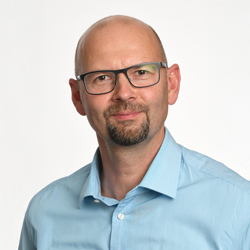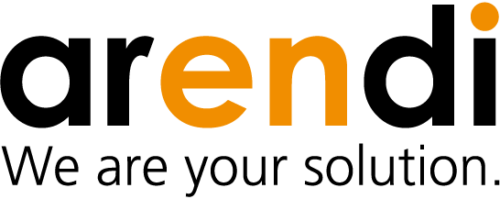The Bluetooth standard is currently undergoing its most important transformation in decades. Thomas Rupp, CEO of Arendi AG, discusses the innovative “Bluetooth 5.2” standard and explains how new technologies such as Auracast significantly enhance both convenience and accessibility.

Thomas Rupp
CEO
Mr. Rupp, your company is a leader in wireless technology. What innovations are emerging in this field?
One major change comes from the expansion of the Bluetooth standard. And it’s long overdue—the current standard used in all wireless headsets dates back to 2003. Starting with the “Bluetooth 5.2” standard, essential extensions become through “LE Audio”. Arendi AG is one of the first companies worldwide to focus on the use and implementation of this technology. A particularly exciting innovation in this context is the new “broadcast method.”
What are the advantages of this method?
From the users’ perspective, the “Auracast” concept is especially interesting. It enables simultaneous transmission of music or voice announcements to any Bluetooth system within a given area. For instance, when I step onto a treadmill at the gym, I can directly connect to the audio stream of one of the TVs. Auracast is also ideal for transmitting important messages or emergency alerts: such messages can be sent directly to compatible hearing aids and all kinds of headsets. In the near future, Auracast will be implemented in public buildings and locations such as shopping malls, train stations, metro platforms, churches, theaters, museums, and guided tours—essentially, wherever audio support is already in use today.
People with hearing impairments will especially benefit from Auracast. Until now, announcements in noisy environments—like airports, train stations, or shopping centers—have posed challenges for those using hearing aids. Auracast will change that. The immense potential of this approach is already being demonstrated by so-called “silent airports,” such as Amsterdam or Helsinki-Vantaa, which are taking their “silent airport” strategies to the next level: selected announcements will be delivered directly to travelers’ headsets, making it much easier and less stressful to follow important messages. Auracast will bring sweeping changes to our field, just like the new “Matter” standard.
What are the advantages of that standard?
Matter will consolidate the technologies used in the consumer sector. So far, every manufacturer has taken its own approach and developed proprietary standards. That’s a nightmare for consumers, as device migration is complicated and often only partially successful. The Matter standard is backed by an alliance of major tech companies: Amazon, Apple, and Google are all on board. Standardization is intended to make it much easier in the future to integrate third-party devices into existing systems.
Many people may be concerned about security, when it comes to Bluetooth connections. How secure is the new standard?
An insecure technology wouldn’t even make it to market today—that’s something the Bluetooth Special Interest Group, which defines the Bluetooth standard, paid close attention to. They ensured that growing security demands are met without excessively compromising user-friendliness.
Which industries and companies does Arendi support with its wireless and communication expertise?
We work with companies from a wide range of industries. Our clients include manufacturers of access systems, sanitary components, hearing aids, building automation components, coffee machines, lighting systems, lab automation, wearables, bicycle components, communication devices, and more. They all benefit from our wireless and communication know-how. What these systems have in common is the need to operate in increasingly connected environments, often under resource-constrained conditions with limited energy. Additionally, they frequently communicate with a cloud and are configured via app. That presents exciting engineering challenges, as we often develop applications down to “the very last bit.” Thanks to Auracast, suppliers in the construction industry are becoming increasingly interesting for us, especially when large infrastructure projects are being planned. Operators are now more often required to ensure accessibility, including for people with hearing impairments. This opens up opportunities for established and new suppliers—and we can take on the role of development partner, integrating the technology into their products.
What does a typical project look like at Arendi?
Usually, companies approach us with a fairly general inquiry. At that point, there’s typically only a vague idea of what type of system is needed and what functions it should provide. In collaboration with the client, we then clarify the specific requirements, gradually creating a clear picture of the project. In the following specification phase, we define exactly which deliverables and development goals need to be achieved, breaking them down into individual work packages. Depending on complexity and scope, project durations vary from a few months to several years.
More information at www.arendi.ch




Schreibe einen Kommentar